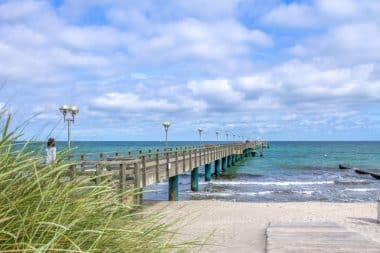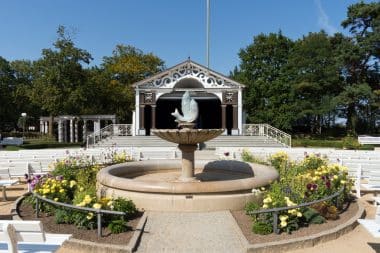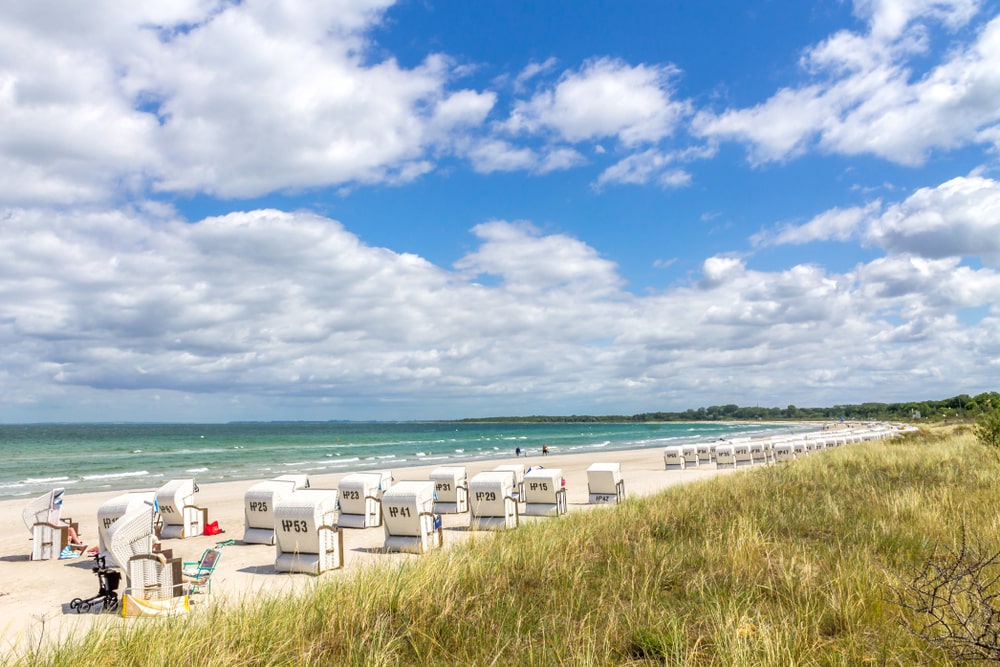What began in 1803 with a bathing cart was continued for almost 200 years. Boltenhagen developed into one of the most popular seaside resorts in Mecklenburg-Western Pomerania. Even though time has produced a large number of seaside and health resorts on the Baltic Sea coast, Boltenhagen lives up to its name as a “pearl by the sea”. The seaside resort of Boltenhagen, which was recognized almost 100 years ago, became today’s seaside spa.
Wellness and relaxation guaranteed
Not far from Wismar and Lübeck lies the Mecklenburg Bay as part of the largest German Baltic Sea bay, bordered by an imaginary line from the eastern tip of the Schleswig-Holstein island of Fehmarn and the northern tip of the Fischland-Darß-Zingst peninsula, the Darßer Ort.
Like pearls on a necklace, the holiday resorts on the coast of the Baltic Sea line up from west to east. They have made a name for themselves over the years as popular tourist resorts and seaside resorts. From small fishing villages or seaside resorts of the last century, the resorts have become one of the most sought-after destinations for family holidays in summer.
In autumn, the cranes prefer the landscape interspersed with lakes and the Bodden waters as a resting place on their migration south – in spring you can expect them on time on their return trip.
No one goes away empty-handed

Boltenhagen with its beach and coastal forest is the ideal holiday destination for families with or without children. On 24 supervised beaches, holidaymakers with and without bathing accompaniment will find what they are looking for on designated beach sections: Relaxing in the sun on the white sand and swimming in the crystal-clear water – a paradise for a while. In a beach chair or in a sandcastle, with a light breeze on your skin and the spicy scent of salt, forest and summer heat in your nose, you forget the time, whether you like it or not.
A wide range of music and theatre for young and old people provides entertainment, Zumba Fitness or Hatha Yoga for physical balance.
The physical well-being is also typically taken care of regionally: the small local fishing fleet brings the fish fresh from the water for meals. If you like, you can receive the cutters when you enter the harbour.
A brief review
In the west, the 5-kilometre-long sandy beach ends in a cliff with a height of up to 35 metres. It was formed by pushed rock made of clay, chalk and scree during the last ice age. A few decades ago, the Baltic Sea coast ended here for holidaymakers and residents of Boltenhagen. Longingly, they looked along the shore of the Baltic Sea towards the west, whose coast was to remain inaccessible. Anyone who dared to cross the inner-German border over the water at that time usually paid for it with their lives.
The sad chapter as a border area with its strict surveillance in divided Germany is over. Anyone who enjoys the white sand on the beach now has no idea that it was closed to visitors from 8 p.m. to 6 a.m., that any use of boats or surfing was prohibited and that at night spotlights searched the beach and the sea for refugees.
If you want to pause for a moment of your holiday today, you could do so at the memorial stone at the Boltenhagen pier. He recalls that in the period from 1961 to 1989, 5000 people wanted to leave the GDR via the Baltic Sea and only 600 of them succeeded.
Carefree holiday feeling

White sand, clear water and, if you’re lucky, plenty of sun. About 30,000 holidaymakers appreciate what the Baltic Sea has to offer with its fresh breeze, slightly salty water and fine sand. Especially for children and non-swimmers, the water near the shore is widely shallow and invites you to play carefree.
In the resort, which is set up for holidaymakers, no one has to do without anything. Even if the weather does not invite you to swim or build beach castles – entertainment is always the order of the day. Restaurants, cafés and the historic, now restored buildings of the spa architecture invite you to stroll and linger. In Boltenhagen you move between nature and urban flair. New, modern apartments have been created from former FDGB holiday homes and children’s holiday camps, which get along well with new holiday resorts and hotels.
Time passes far too quickly when strolling along the promenade or in the spa gardens, attending a concert in the concert shell or taking a healthy sip in the drinking spa hall. You can wait for the sun to set with a glass of red wine on the 290-metre-long pier, before listening to the sound of the waves in the warmth of a summer night and looking forward to the next day.
If you feel like it, you can visit the Boltenhagen districts of Redewisch, Tarnewitz and Wichmannsdorf by bike along the avenues of old trees and fields typical of the area. The nature reserve east of the main village, the Tarnewitzer Huk, is closed to visitors, but the marina “Weisse Wieck”, surrounded by forest to the north and west, is an interesting destination.
Via Wichmannsdorf or Redewisch you reach Klütz with some architectural sights. The three-aisled church of St. Mary, built of red brick typical of the region, is just as impressive as the medieval, well-restored town centre.
You can park your bike at the town’s listed train station and from there take the small-gauge railway “De Lütt Kaffeebrenner” to Reppenhagen or Grevesmühlen. In any case, the fun goes along when the train puffs, squeaks and whistles its way.


